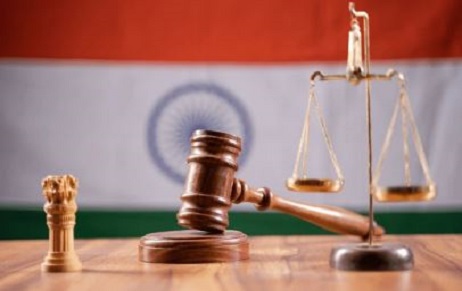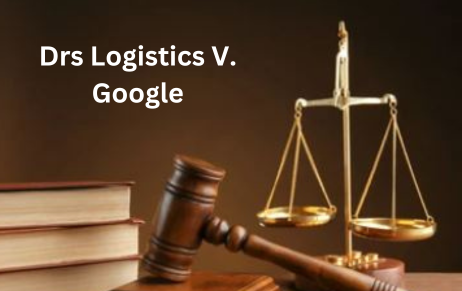ABSTRACT The project employs doctrinal research methods, i.e. secondary research which involves writing on basis…
Determining When A Printed Publication Is Publicly Accessible
Here is the latest article by Dr. Sanjeev Mahanta, Guest Blogger at IIPRD. Sanjeev is an attorney in the Patent group of Arent Fox, LLP. Sanjeev’s practice focuses on prosecution of domestic and international patent applications. Sanjeev helps clients obtain patents across a wide technology spectrum including biotechnology, pharmaceuticals, chemistry, materials science, and medical device. For more information or to contact Sanjeev, please visit his Firm Profile Page.
“Where a patent invalidity defense is based on assertion, as prior art, of a publication distributed at an event, multiple factors must be considered to determine if the publication was sufficiently publicly accessible.”
Twice during the last year, the Federal Circuit found itself clarifying the meaning of public accessibility of a printed publication for the purposes of prior art under 35 USC §102. In one case, the court affirmed, and in the other, reversed the ruling of the lower tribunal. Each ruling originated from decisions of the Patent Trial and Appeal Board (PTAB). The factual contexts of the two cases are quite different. One relates to whether the relevant public had access to a catalog distributed at an event with restricted attendance. GoPro, Inc. v. Contour IP Holding LLC. 2017-1894, 2017-1936 (Fed. Cir. July 27, 2018) (“GoPro”). The other concerns the ability of a person to find a document in a library by means of an electronic search. Acceleration Bay, LLC v. Activision Blizzard Inc., 2017-2084 (Fed. Cir. Nov. 6, 2018) (“Acceleration Bay”). Neither situation is uncommon. As the Federal Circuit explained, whether the target audience would have been interested or had expertise in the subject matter of the event in which the publication was distributed is not by itself dispositive of the public accessibility inquiry. GoProat 8. Also, where an electronic search is concerned, the test for public accessibility is not simply whether a document had been indexed.
Rather, a reference is considered publicly accessible if it was disseminated or otherwise made available to the extent that persons interested and ordinarily skilled in the subject matter or art exercising reasonable diligence, can locate it. Id. at 6. And, if accessibility is proved, there is no requirement to show that particular members of the public actually received the information. Id.
GoPro, Inc. v. Contour IP Holding LLC
GoPro petitioned for inter partes review (IPR) of two patents owned by Contour, challenging them on obviousness grounds. As prior art, it relied on a 2009 GoPro sales catalog. The catalog discloses a digital camera linked to a wireless viewfinder/controller that allows for a user preview before recording. The PTAB instituted two IPRs finding that Go-Pro had made a threshold showing that the catalog was prior art.
Critical to the decisions to institute was a declaration from Mr. Jones, a GoPro employee, relating to the distribution of the GoPro catalog. In the declaration, Mr. Jones testified that on GroPro’s behalf he had attended a trade show in 2009 held by Tucker Rocky. Tucker Rocky is a trade organization directed to motorcycles and other action sports vehicles as well as associated accessories for vendors, dealers, retailers, customers, and enthusiasts of such motorcycles and outdoor vehicles. IPR2015-01080 at 21-22. The accessories include video cameras that are mountable, for example, to a rider’s helmet or vehicle. According to Mr. Jones, the trade show had about 150 vendors and over 1,000 attendees, including customers of portable point of view (POV) sports video cameras. Mr. Jones further testified that the catalog was both displayed in the GroPro booth and distributed to the attendees.
During the IPR, Contour contended that not sufficient evidence had been presented to demonstrate that the GoPro catalog was a prior art printed publication. Contour’s first argument was that no evidence had been presented that the 2009 Tucker Rocky Dealer show was advertised or announced to the public, such that a person interested and ordinarily skilled in the art from the public would have known about it and could have obtained a copy of the GoPro catalog there. Id. at 23-24. The focus of this argument was on whether the relevant public would have had knowledge of the show. Contour had provided evidence of Tucker Rocky website from 2009 which explained that Tucker Rocky was a wholesale distributor that did not sell to the public. Id. at 24. The PTAB agreed with Contour, finding that Mr. Jones’ testimony did not explain how any member of the general public, as opposed to just Tucker Rocky’s members, would have known about the show. It noted that Tucker Rocky was a membership organization, and the show featured its dealer and vendor members. Id. at 23-24.
Contour’s second argument was that no evidence had been provided showing that the GoPro catalog was disseminated or otherwise made available at the show to persons ordinarily skilled in the art. Id. at 25. This argument focused on whether individuals who received the catalog qualified as persons of ordinary skill in the art. Of note, the PTAB had determined that a person of ordinary skill in the art would have had at least a bachelor’s degree in computer science, electrical engineering, or a similar discipline, and some experience creating, programming, or working with digital video cameras, such as POV action sports video cameras. Id. at 18. Here the PTAB pointed out that GroPro had not explained why, or provided any evidence demonstrating that such persons would have been in attendance at the 2009 Tucker Rocky Dealer show, observing that the show was directed primarily at sales and marketing personnel. Id. at 25. The mere fact that someone is an action sports vehicle and accessory enthusiast does not demonstrate that he or she is a person ordinarily skilled in the art at the time of the invention, the PTAB observed. Id. at 26.
Based largely on these arguments, the PTAB concluded that GoPro had not met its burden to show that the catalog was disseminated or otherwise made available to the extent that persons interested and ordinarily skilled in the subject matter or art and exercising reasonable diligence could have located it. Id. at 27-28.
The Federal Circuit disagreed. It reminded that § 102 has been interpreted broadly such that even relatively obscure documents can qualify as prior art so long as the relevant public has a means of accessing them, explaining that accessibility goes to the issue of whether interested members of the relevant public could obtain the information if they wanted to. GroPro at 6. The court found that the PTAB had focused on only one of several factors determining public accessibility – the expertise of the target audience. But this factor alone was not dispositive of the public accessibility inquiry, the court observed. Id. at 8. Other factors such as the nature of the conference or meeting; whether there were restrictions on public disclosure of the information; expectations of confidentiality; and expectations of sharing the information also needed to be taken into consideration. Id.
The court explained that a trade show was not unlike a conference in that both were desirable options for individuals interested in new products on the market identical or similar to those featured in these venues. Id. at 8. Further, it observed that the fact that the Tucker Rocky trade show was focused on action sports vehicles was not preclusive of persons ordinarily skilled in the art attending to see what POV digital cameras were being advertised and displayed. Id. at 9. The court highlighted the connection between the cameras and action sports vehicles, pointing to (1) the Tucker Rocky website which states that it stocks and sells “over 75,000 items for street bikes, off-road motorcycles and ATVs [all-terrain vehicles], as well as accessories and apparel needed by the people that ride them.” (emphasis added) and (2) the Counter patents which explain that the digital camera covered by the patents “is wearable and designed for rugged environments (water, heat, cold, extreme vibrations), and the Contour 1080PTM system [having a digital camera] includes application mounts 126 to attach to any person, equipment or vehicle.” Id. Thus, according to the court, a person with expertise in POV digital cameras would have been interested in a trade show focused on action sports vehicles.
As to the PTAB’s conclusion that the show was not open to the general public and that GoPro had failed to provide evidence that someone ordinarily skilled in the art actually attended the dealer show, the court first reminded that the standard for public accessibility was one of “reasonable diligence,” to locate the information by “interested members of the relevant public.” Then the court pointed to Mr. Jones testimony that the GoPro catalog was disseminated with no restrictions and was intended to reach the general public, and also that the show was attended by actual and potential dealers, retailers, and customers of POV video cameras. Id. at 10. In other words, if a person in the general public interested in POV video cameras wanted to, he or she would have been able to get a copy of the catalog despite restriction on admission. The Federal Circuit therefore concluded that GoPro had met its burden to show that its catalog was a printed publication under § 102(b).
Acceleration Bay, LLC v. Activision Blizzard Inc.
Blizzard petitioned for IPR of three U.S. Patents owned by Acceleration Bay, challenging them on obviousness grounds. Six IPRs were filed, two for each patent. Prior art relied on as primary references were: (1) an article by Peter J. Shoubridge et al. (“the Shoubridge article”); and (2) an article by Meng-Jang Lin et al. (“the Lin article”). One set of IPRs (“Shoubridge IPRs”) relied on the Shoubridge article, alone or in combination with other art. A second set relied on the Lin article (“Lin IPRs”), also alone or in combination with other art. All IPRs were instituted and six decisions rendered. In the Lin IPRs, the PTAB concluded that the Lin article was not prior art under 35 U.S.C. § 102(a), determining thereby that Blizzard had failed to show that the challenged claims were unpatentable over the Lin article. Blizzard appealed.
The PTAB found that the Lin article was not publicly accessible before the critical date. According to the testimony of a Systems Administrator in the Computer Science and Engineering (CSE) Department of the University of California, San Diego (UCSD), the article had been uploaded to the Department’s Technical Reports Library’s website. Acceleration Bayat 11-12. The Administrator testified that it was regular practice for a staff member to assign a unique identifier to each report based on the year and the relative order it was uploaded in comparison to other papers. Id. at 12. Despite the indexing and the availability of a search function, the PTAB determined that the article was not publicly accessible. It noted that “Public accessibility” requires more than technical accessibility. Id. Because there was no evidence that the article was disseminated to the public, it focused on whether an interested skilled artisan, using reasonable diligence, would have found the article on the CSE Technical Reports Library website. The website allowed a user to view a list of technical reports indexed only by author or year. At best, this would have allowed an artisan to locate the article by skimming through potentially hundreds of titles in any given year, most containing unrelated subject matter, or by viewing all titles in the database listed by author, the PTAB noted. Id.Also, the PTAB found that the website’s advanced search function, which allowed a user to search keywords for author, title, and abstract fields, was deficient and thus, not reliable.
The PTAB therefore concluded that Blizzard had failed to sufficiently show that the UCSD CSE Technical Reports Library was searchable or indexed in a meaningful way such that a person of ordinary skill in the art would have been able to locate the article, finding therefrom that the article was not a printed publication under § 102(a). The Federal Circuit agreed, determining that substantial evidence supported the PTAB’s findings.
A Multi-Factor Consideration
Where a patent invalidity defense is based on assertion, as prior art, of a publication distributed at an event, multiple factors must be considered to determine if the publication was sufficiently publicly accessible. The inquiry is fact-intensive, and the factors include whether there was any restriction placed on the publication distributed at the event. The expertise of the target audience is not the sole determinant in the inquiry. Also, in patent challenges where the prior art is an electronically-indexed document but the indexing was inadequate, the art may be invalidated for not being sufficiently publicly accessible.
Blog can also be seen/read at:https://www.ipwatchdog.com/2019/05/21/determining-printed-publication-publicly-accessible/id=109393/?



